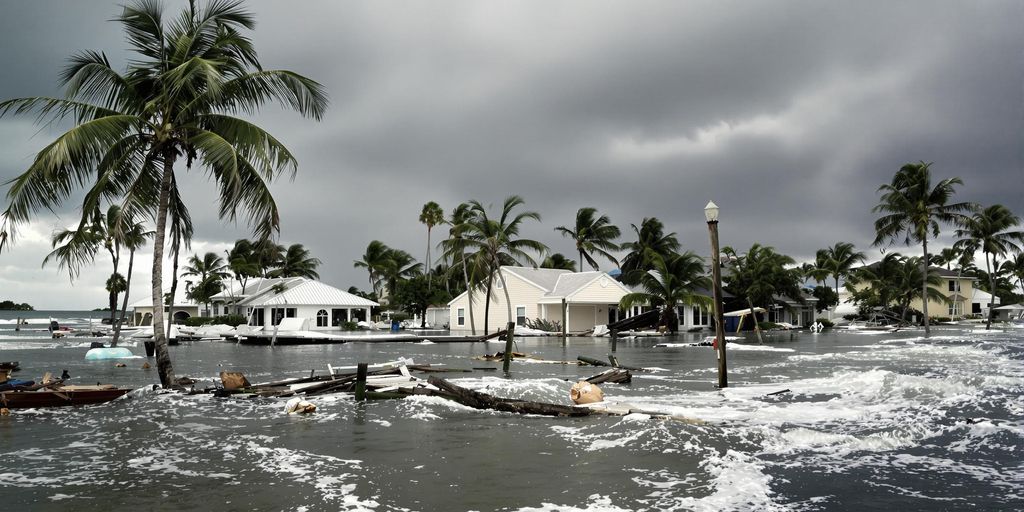Florida’s real estate market is grappling with the escalating impacts of climate change, leading to concerns about future property values and a potential shift in buyer behavior. Increased hurricane activity, rising insurance costs, and persistent flooding are challenging the state’s long-held appeal, prompting some residents to reconsider their investments.
The Shifting Sands of Florida Real Estate
Recent data indicates a cooling trend in Florida’s once-booming real estate market. RedFin reported a 10.2% drop in homebuying from October 2023 to October 2024, with the average days a home is listed increasing by over a third to 67 days. Major cities like Fort Lauderdale and Miami have seen significant declines in investor purchases, 23.8% and 19.4% respectively.
Climate Change’s Tangible Impact
The connection between a warming climate and more intense hurricanes is undeniable. Warmer ocean waters fuel stronger, more destructive storms, leading to increased risks from heat, precipitation, and floods. This has direct consequences for homeowners:
- Soaring Insurance Premiums: Florida has experienced the largest premium hikes in the U.S., with some homeowners forced to rely on the state-backed insurer of last resort. Ten new insurance companies have entered the state, but often with higher deductibles.
- Structural Integrity Concerns: A higher water table and frequent storms can lead to saltwater intrusion, rusting rebar in concrete, and necessitating costly repairs, particularly for older coastal condominiums.
- Displacement and Damage: Hurricanes Helene and Milton in 2024 caused widespread displacement and property damage, with Lee County alone receiving $1 billion in federal aid for long-term recovery.
The "Climate Denial Bubble" and Its Potential Burst
Despite the evident risks, many areas of Florida’s real estate market have shown remarkable resilience, leading some experts to describe it as a "climate denial bubble." Property values in flood-prone areas have often increased after disasters, with buyers seemingly overlooking the long-term threats. For example:
- In Key Largo’s Stillwright Point, after 90 days of flooding in 2019, year-over-year sales rose 40%, and the median price increased by $20,000. Six years later, the median price is nearly $200,000 higher.
- Miami’s Little Havana saw a $20,000 increase in median home prices the year after a major rainstorm in June 2022.
- Fort Lauderdale’s Edgewood experienced a $15,000 jump in median single-family home prices after a "biblical rain bomb" in April 2023.
However, there are signs of a potential shift. While affordability and job opportunities remain primary concerns for buyers, climate risk is gaining more attention. Real estate websites now feature flood risk information, and research suggests buyers are becoming more responsive to these warnings. The recent plunge in prices for flood-damaged homes in St. Petersburg’s Shore Acres neighborhood after Hurricanes Helene and Milton could signal a turning tide, where the combined impact of damage and soaring insurance costs finally influences property values.
Key Takeaways
- Florida’s real estate market is experiencing a slowdown, with decreased sales and longer listing times.
- Climate change is intensifying hurricanes, leading to higher insurance costs and structural damage.
- Despite past resilience, a "climate denial bubble" may be slowly deflating as buyers become more aware of flood risks.
- The long-term economic impact, including potential systemic collapse of property values and federal mortgage companies, is a growing concern for some experts.
Sources
- Will climate change dampen demand for Florida residential real estate?, WUFT.
- Climate Change Is Causing The Florida Real Estate Market To Tumble, CleanTechnica.
- Climate Change Is Coming for Florida’s Real Estate. Why Don’t Prices Reflect It?, Pulitzer Center.
- Climate change is coming for Florida’s real estate. Why don’t prices reflect it?, Tampa Bay Times.
- Climate change and Florida housing: Why prices stay high, Miami Herald.


